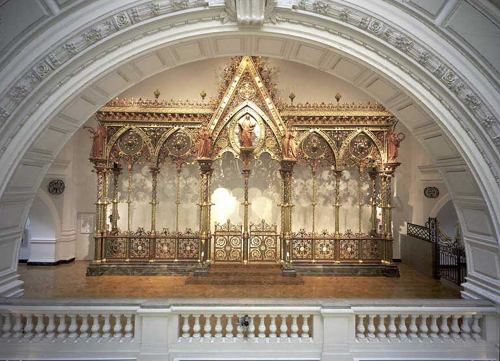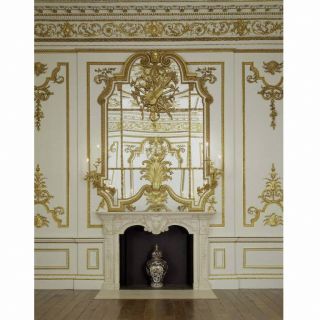
I have carried out a number of projects in the museum; several have involved paint analysis, including:
1) The Paul Pindar House

The object in the Victoria and Albert Museum consists of the first and second floors of a timber-framed house that was originally built for Sir Paul Pindar in Bishopsgate. It is one of the finest specimens of timber-framed domestic architecture in London and was constructed in about 1600 by a wealthy merchant. Paul Pindar went to Venice in 1584, at the age of 18, and over the next 14 years he amassed a vast fortune that helped him build this new house. Later he became ambassador to Turkey and was knighted by James I.
In 1890 the whole of the properties held in the seventeenth century by Paul Pindar, and his brother Ralph, were removed to make way for the Great Eastern and North London railway termini. By this time the building was reported to be a dangerous structure. The tavern and adjoining property were purchased to make room for a further extension of Liverpool Street Station, lines for suburban traffic, hotel accommodation and offices. The house front and one plaster ceiling were presented to the V&A.
2) The Hereford Screen.

The Screen was made by Skidmore at his works in Coventry to the designs of Sir George Gilbert Scott. It was shown at the International Exhibition, at London, in 1862, before being sent to Hereford Cathedral where it remained until the 1960s. It had been in the V&A store for the last thirty years when I examined it.
An examination of the scattered pieces of the screen indicated that those surfaces that still displayed areas of paint retained their original paint colours. At least two areas, however, seemed to have had a new colour introduced at an early stage. I was able to produce information on the nine colours that had been used.
I also gave advice on the British Galleries project – in particular the Norfolk House Music Room.

This panelling and ceiling came from the Music Room of Norfolk House, the London town house of the Dukes of Norfolk (demolished in 1938). The Music Room formed part of a circuit of state rooms on the first floor, which included three drawing rooms and a state bedchamber. The ceiling panels are decorated with trophies representing the Arts, and the larger wall panels with musical trophies, surmounted by heads of , the ancient Greek god of music.
Lead paint was used in the repainting.

View Larger Map











[...] Figure 1- The V&A, 2015, The V&A Museum, http://patrickbaty.co.uk/2010/11/25/victoria-and-albert-museum/ [...]